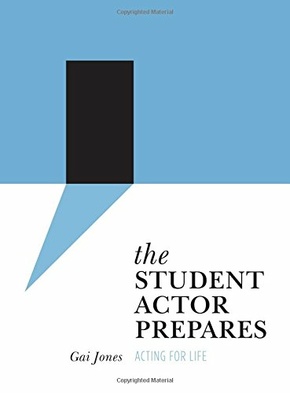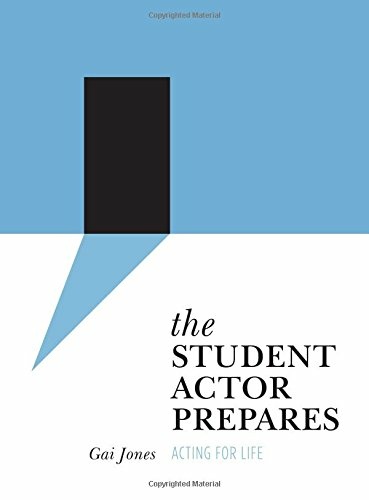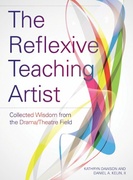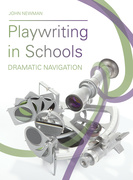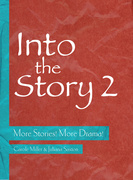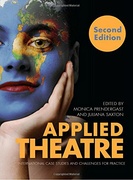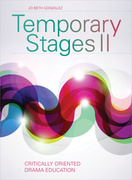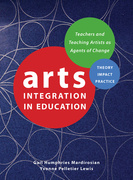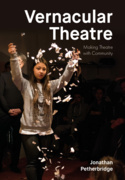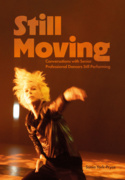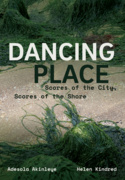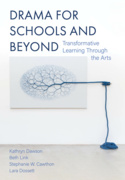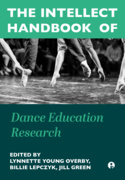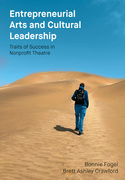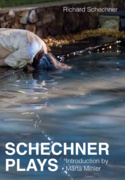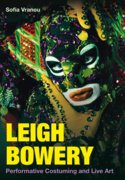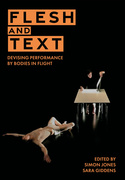The Student Actor Prepares (Book)
Acting for Life
The Student Actor Prepares is a practical, interactive approach to a student actor’s journey. Each chapter includes acting principles, their importance to the process, and workbook entries for emotional work, script analysis and applications to the study of theatre. Topics cover a brief history of the art of acting and how the study of acting can be an advantage in numerous occupations; an actor’s discovery of emotional work; movement and mime practices for the actor; vocal practices for the actor; solo improvisational study; script analysis for the individual actor; rehearsal tips; monologue work; original solo work; audition information; working with an acting partner or in a production; acting resources; and research topics.
Edition
The Student Actor Prepares is a practical, interactive approach to a student actor’s journey. Each chapter includes acting principles, their importance to the process and workbook entries for emotional work, script analysis and applications to the study of theatre. Topics cover a brief history of the art of acting and how the study of acting can be an advantage in numerous occupations; an actor’s discovery of emotional work; movement and mime practices for the actor; vocal practices for the actor; solo improvisational study; script analysis for the individual actor; rehearsal tips; monologue work; original solo work; audition information; working with an acting partner or in a production; acting resources; and research topics.
Gai Jones, founder of California Youth in Theatre, taught theater at El Dorado High School in Placentia, CA, for thirty-four years.
Prologue
Creative (CI) and Reflective Inquiry (RI) Journey
Brief History of Theatre Acting
Theatre Vocabulary for the Acting Student: Top One Hundred and Sixty Essential Words
Theatrical Humor
Reading Plays
Closure for The Student Actor Prepares: Acting for Life: Prologue
Chapter One: Introduction to Theatre Acting
Unlimited Potential
Skills Developed by the Acting Process
Actor’s Personal Autobiography
Natural Talents and Aptitudes
Acknowledging your Uniqueness
Positive New Experiences
Dealing with Inhibitors
Dealing with Negativism and Rejection in the Acting Biz
Winning Attitudes
Closure for Chapter One: Theatre Acting
Chapter Two: Creativity
Introduction to Creativity
Definition of Creativity
Say Yes to Creativity
Various Types of Creative Thinking: Brainstorming, Intuition, and Left Brain Right Brain
Tips on How to Increase your Creativity
Experiences to Increase your Creativity
Left Brain/Right Brain Experience
Thinking Outside the Box
How an Actor Benefits by Thinking Creatively
Using Both Left and Right Brain Thinking in Acting
Closure for Chapter Two: Creativity
Chapter Three: Movement
Introduction to Movement
Definition of Movement
History of Movement Training
Introduction to Relaxation for Movement
The Bow
Video Recording as Part of your Rehearsal Process
Preparation for Actor’s Character Stance and Movement
Stage Stances and Movement
Introduction to Mime Study for the Actor
Closure for Chapter Three: Movement
Chapter Four: Vocal Work
Introduction to Vocal Work
Taking Care of your Voice
Warm-Up for Vocal Experiences
Vocal Vocabulary and Assignments
Song Lyrics for Vocal Work
Shakespeare for Vocal Interpretation
Closure for Chapter Four: Vocal Work
Chapter Five: Improvisation
Introduction to Improvisation
Definition of Improvisation
History of Improvisation
Why an Actor Studies Improvisation
Vocabulary Used in the Study of Improvisation
Difference between Giving a Speech and Solo Improvisation Performance
Difference between Ad Lib and Improvisation
How an Actor Uses Improvisation
Basic Principles of Improvisation
Warm-Ups for Improvisations
Solo Improvisation
Closure for Chapter Five: Improvisation
Chapter Six: Acting and Script Study
Introduction to Acting
History of Acting: Mechanical to Method
Master Acting Teachers
Acting Vocabulary
Reading and Analyzing a Script from an Actor’s Point of View
Character Biography for a Monologue from a Play
Closure for Chapter Six: Acting and Script Analysis
Chapter Seven: Monologues
Introduction to Monologues
Definition of a Monologue
History of the Monologue
Monologue Vocabulary
Why an Actor Studies Monologues
The First Day: Monologue for Analysis and Staging
Warming Up
Keeping it Real and in the Moment—Not Indicating
Staging
Memorizing Monologues
Musical Theatre Lyrics as Monologues

